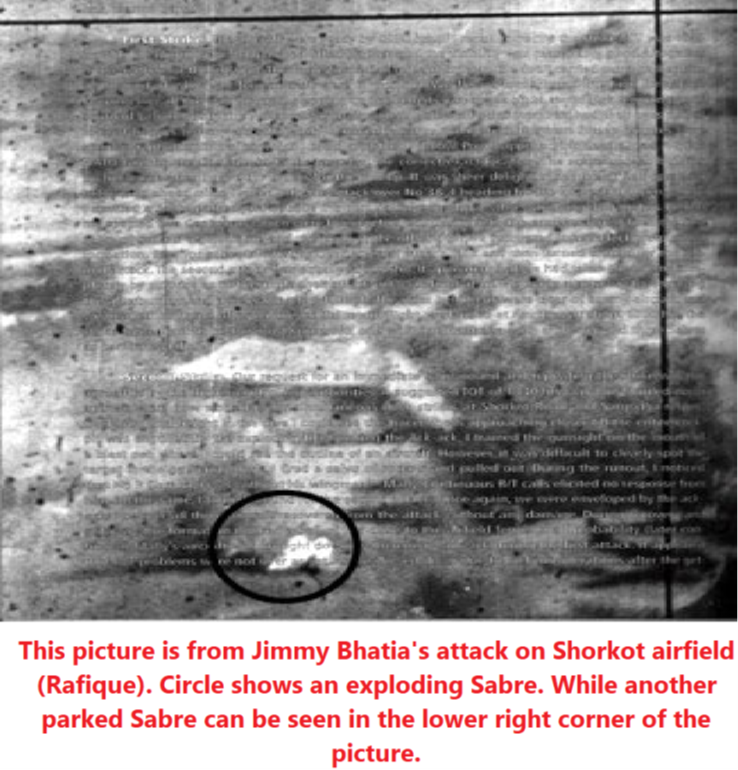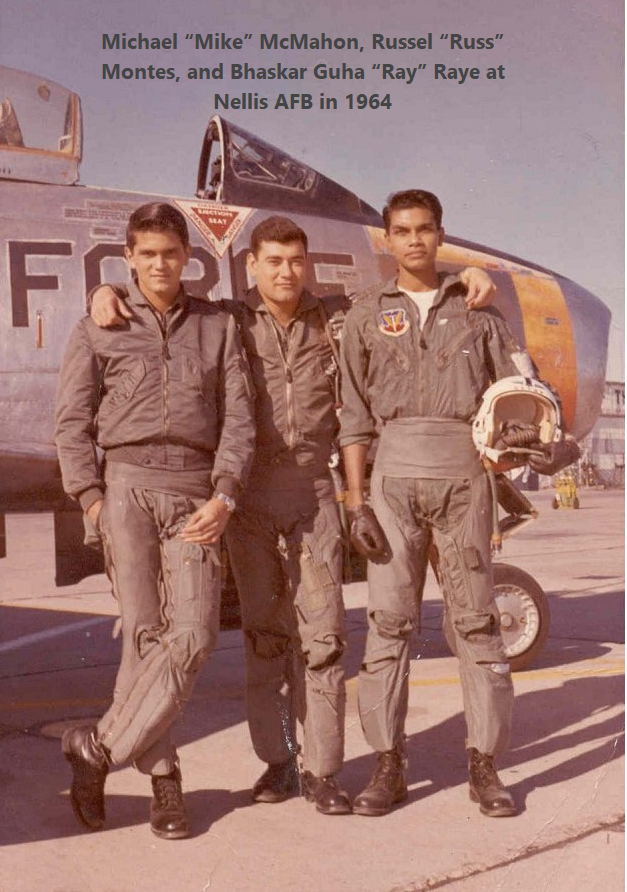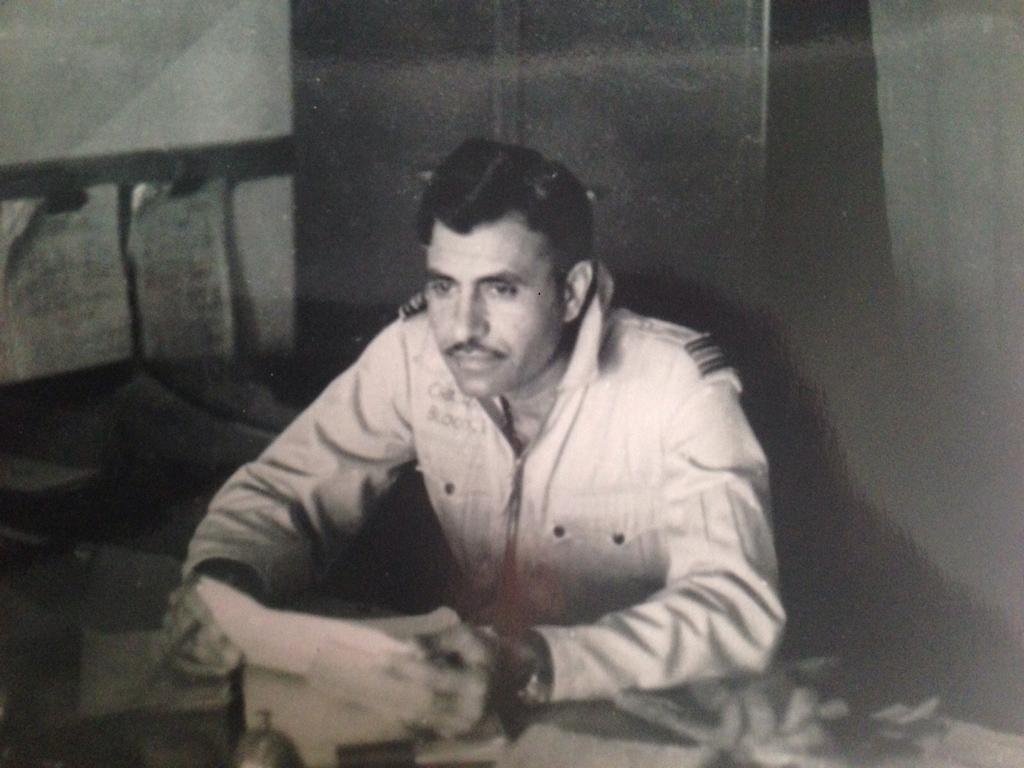
Air Mshl VK “Jimmy” Bhatia – one of only 5 to be “Bar to VrC” in @IAF_MCC . Jimmy’s exceptional aviation career remains unmatched. He flew 34 sorties across 65 & 71 wars, deep into enemy territory destroying ac & military assets. His story. #LivingLegends #IAFHistory (1/24) 

He was born on 5 Oct 42 at Mardan, near Peshawar as one of seven siblings with 3 elder sister & 3 younger brothers. Partition took a toll on the family. His mother &all the brothers died during the partition/ migration years plunging the family into a nomadic state for years. 2/
His father was a police officer in Peshawar & was absorbed in IPS, Rajasthan Cadre, where Jimmy spent his early years. Jimmy passed Matric from Raj Univ, at little over 13 ½ years of age. One year in Maharajas College, Jaipur & joined NDA at about 15 years in age. 3/ 

Commissioned with 47 others as the 81st Pilot Course on 26 May 62, aged just 19 ½, Jimmy stood first in the order of merit at Jet Training Wing winning the Chief of the Air Staff's medal. All throughout his career, he would go on to be amongst the top of his class henceforth. 4/ 

Commissioned to fighter stream, he was sent to 47 Sqn at Kalaikunda for Toofani (Dassault M.D.450 Ouragan). He would subsequently serve with 47 Sqn and 29 Sqn in eastern sector at Hashimara & Tezpur between 1962-69, clocking 250 hours during his career on the aircraft 5/ 

Jimmy’s reputation as a “born fighter pilot” was taking shape. Barely a year into service, he was sent to USAF Combat Crew Training Course and was the recipient of the ‘Top Gun’ and ‘Outstanding Student’ trophies.
https://twitter.com/AnchitGupta9/status/15400024868444364806/
From Apr 64 to Aug 66, Jimmy was posted to the Mystere equipped 8 Sqn at Adampur & Ambala and flew nearly 500 hours on the type. It was here that Jimmy was awarded a Vir Chakra for 18 ops sorties, attacking enemy targets in the critical Lahore sector. 7/ 

His first msn was a strike against enemy armour at Dera Baba Nanak using two rocket pods each with 19 X 68 mm sneb rockets on 6 Sep. The next day as IAF launched offensive sorties, Jimmy was in the first formation of 8 sqn striking Bhagtanwala airfield to the east of Sargodha 8/ 

During the war, Jimmy flew at least 7 CFSO msns (against enemy airfield/ army targets), 1 counter-air msn, 5 air defence armed patrols, and one interdiction of an underground barrage on the Ravi river near Lahore. 9/ 

In 1966-67, he was to become a Pilot Attack Instructor (The then Top Gun equivalent school of IAF). Less than 200 of them between 1956-70 had the distinction of doing the course. Barely 25 years old, Jimmy was a PAI, USAF Top Gun and Vir Chakra awardee. 10/ 

After a year-long tenure flying Hunters with 37 Sqn, Jimmy converted to the Su-7 (S-22T) ac with 32 Sqn at Ambala in 1969. He served the unit for nearly 3 years and earned his second Vir Chakra (Bar to VrC) during the 71 war. 11/ 

Even before the war, Jimmy flew 5 PR sorties to potential targets in Pak on Oct 23, 31, Nov 9, 10 & 30 at Domeil bridge, Mirpur area, Rahim Yar Khan & Fort Abbas. The sorties were flown from Pathankot, Adampur, Jaisalmer (2) & Sirsa using the AFA 39- modified Su-7(S-22T) . 12/ 

On 4th & 5th Dec, he led three counter-air strikes against Rafiqui/Shorkot Road, one of PAF's citadels, and caused extensive destruction to aircraft and installations on the ground. 13/ 

He also carried out interdiction & close air support msns accounting for enemy guns & tanks. He bombed two ordnance depots at Lahore. His two daring single ac PR missions deep inside enemy territory brought back full photo coverage of the PAF's Chaklala & Murid air bases. 14/ 

For two years (1974-76), he was deputed to No. 8 Sqn (Iraq Air Force) at Kut to impart fighter training to pilots on the Su-7, despite not being a QFI (Qualified Flying Instructor), which was a norm. overall, he has 1290 hours on the Su-7, the highest by an IAF pilot AFAIK. 15/
Jimmy was posted to AEB as a flying inspector in 1972-74 and flew numerous aircraft during this period. He was the last OC Flying of Ambala (now called COO) in 1977 as a young Wg Cdr. His next big hurrah - command of a fighter sqn 16/ 

Jimmy was given command of 220 sqn at Jodhpur in Jan’81. The sqn was operating the Maruts but was to be the second sqn to induct the MiG-23BN after 10 sqn. It speaks to the trust IAF had in him to have him lead the induction, a role he played for the next 30 months. 17/ 

In parallel, Jimmy was groomed for staff roles. He did his staff college in 1977 and went to the Royal College of Defence Studies in 1992. He had tenures as Deputy Dir (intelligence) looking at Pak desk,Dte of Offensive Ops (Dep Dir) & Dte of Air Staff inspections (Joint Dir) 18/ 

As a result of Siachen activation (Op Meghdoot), it was decided to induct Fighters at Leh & Jimmy was posted as COO of Leh (84-87). In this period Hunters, MiG-23,s MiG-21s flew over 1,000 sorties from Leh. 19/
https://twitter.com/AnchitGupta9/status/1495014840242302980
Barely 46-year-old, he was promoted to Air Commodore in 1988. In the Air ranks, he would serve as Air-I Eastern Air Command, ACAS (Ops), SASO WAC, Staff of DPS (MoD), and IG(Inspection & Safety) for over 6 years. 20/
On taking over as Air Officer Commanding, Srinagar, 1 Wing in 1990, he was faced with precarious internal security matters apart from maintaining the base for operational readiness. For his role, he was awarded the Ati Vishist Seva Medal during this tenure. 21/ 

Jimmy Bhatia served from Dec 97 to Apr 02 as AOC-in-C of three operational commands of IAF – CAC (During Kargil ’99), WAC, and SWAC prior to his retirement. No other officer has served for so long as AOC-in-C in the last 40 years. 22/ 

In Jimmy’s remarkable career – he flew nearly 5,000 hours & is one of the most decorated officers, but perhaps his most notable feat is unanimous awe of his flying skills amongst his peers. If ever there was a wall of most respected fighter pilots of IAF, he would be on it. 23/ 

If you missed the first “Bar to VrC” story - The first to be chronicled was Air Cmde AIK Suares. His life story -
https://twitter.com/AnchitGupta9/status/1491274558783246338(24/24)
• • •
Missing some Tweet in this thread? You can try to
force a refresh

















